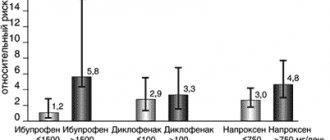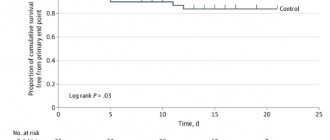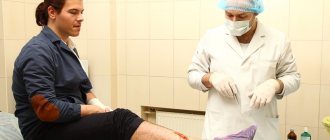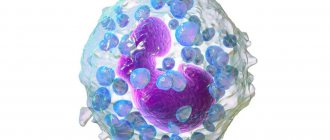In what situations should you undergo a cardiac ultrasound?
- Changes in ECG indicators.
- Heart murmurs.
- A slight increase in body temperature in the absence of inflammatory processes in the throat, nose, ear or kidneys.
- Arrhythmia.
- An x-ray of the heart showed a change in its shape and size, as well as in the vessels extending from it.
- Hypertension.
- Predisposition to hereditary heart diseases.
- Possible changes in cardiac structures.
- Fainting, swelling, shortness of breath, dizziness.
- Pain in the left half of the chest and behind the sternum.
- Risk of heart tumors.
- After myocardial infarction.
- Effusion pericarditis.
- Angina pectoris.
- Diagnosis of cardiomyopathy and its type.
- To detect true or false cardiac aneurysm.
It is extremely important to carry out this procedure after a myocardial infarction to determine how many muscle cells have died.
ECG and ultrasound of the heart should be performed by people in stressful situations, experiencing severe emotional and physical stress.
EchoCG has no age restrictions. It is prescribed to children if a congenital heart defect or a change in its structure is suspected, which often occurs during the period of active growth of the child.
EchoCG is prescribed for pregnant women, because allows you to identify heart defects in the fetus in the womb. The procedure is painless and does not cause harm.
Heart ultrasound is a mandatory procedure during pregnancy if:
- There was a history of spontaneous abortions.
- Diabetes.
- Hereditary predisposition to heart disease.
- In the 1st and 2nd trimester, the woman was forced to take antiepileptic drugs and antibiotics.
- The analysis revealed high titers of antibodies to rubella, or the woman had it during pregnancy.
Fetal echocardiography is prescribed at 18-22 weeks. Children undergo it when the above symptoms appear.
Echocardiography in children
As noted above, the undeniable advantages of EchoCG are the non-invasiveness, painlessness and complete safety of this method of cardiac research. The manipulation is not associated with radiation exposure and does not provoke any complications. Therefore, if there are appropriate indications, the study can be recommended not only for adults, but also for children.
Diagnostics will help to timely detect congenital pathology in young children, which, in turn, will make it possible to select the most effective treatment. As a result, the child will be able to lead an absolutely fulfilling life in the future.
Indications for echocardiography in a child are:
- Heart murmurs.
- The appearance of shortness of breath either during physical activity or at rest.
- Blueness of the lips, nasolabial triangle, fingertips.
- Decreased or complete lack of appetite, too slow weight gain.
- Complaints of constant weakness and fatigue, sudden fainting.
- Complaints of frequent headaches.
- Discomfort behind the sternum.
- Decrease or increase in blood pressure.
- The appearance of swelling in the extremities.
Taking into account the fact that the method is safe, echocardiography can be performed on children more than once in order to track the development of the disease or assess how effective the treatment is. If any pathological changes have been identified, a study is carried out at least once every twelve months.
Best materials of the month
- Coronaviruses: SARS-CoV-2 (COVID-19)
- Antibiotics for the prevention and treatment of COVID-19: how effective are they?
- The most common "office" diseases
- Does vodka kill coronavirus?
- How to stay alive on our roads?
Methods for performing echocardiography of the heart
- M – method (one-dimensional). With its help, the dimensions of the heart chambers and the work of the ventricles during their contraction are accurately determined. The indicators are presented in the form of a graph.
- B – method (two-dimensional). Allows you to see tumors, blood clots and aneurysms. With its help, the thickness of the heart walls and valves is measured, and the degree of contractility of the ventricles is determined.
- Electrocardiography with Doppler. The procedure is necessary to diagnose heart defects and other serious disorders.
Ultrasound can be performed through the esophagus or during periods of active physical activity.
Echocardiography through the esophagus is prescribed in situations such as:
- Infectious endocarditis.
- Routine examination before installation of an artificial valve.
- After a stroke and in cases of cerebral circulation disorders and atrial fibrillation.
- Cardio version.
- Defect of the septum between the atria.
- The impossibility of traditional ultrasound of the heart. This occurs in the presence of costal ossification and other disturbances in the structure of the chest.
It is prohibited to perform cardiac echocardiography through the esophagus if there is:
- Varicose veins of the esophagus.
- Strong gag reflex.
- Radiation therapy of the esophagus.
- Osteochondrosis of the cervical spine in acute form.
- Enlarged hernia on the diaphragm.
- Gastric and intestinal bleeding.
- Intestinal perforation.
- Spasms, tumors, intestinal diverticula.
- Pathological mobility of the cervical spine.
Rules for preparing and conducting echocardiography through the esophagus:
- Stop eating and drinking at least 4 hours before the ultrasound
- Pull out dentures and gastric tube
- Before the procedure, the patient's mouth and throat are irrigated with lidocaine.
- The patient lies on his left side, a mouthpiece is inserted into his mouth and an endoscope is carefully inserted into the esophagus, through which ultrasonic waves penetrate
- The procedure takes from 15 to 20 minutes and is recorded on video.
The essence of the diagnostic method
Echocardiography (EchoCG) is a modern, non-invasive, informative method for examining the functional and morphological state of the heart and valve apparatus, which is based on the effect of reflection of ultrasonic waves from cardiac structures.
Echocardiography is based on the use of ultrasound - high-frequency waves that the human ear simply cannot detect. A special sensor is placed on the human body, which becomes a source of ultrasound propagating through the tissues. At the same time, the frequency, amplitude of oscillations, their period changes, all these data are correlated with the state of those internal organs that are examined using this technique.
The modified waves return to the sensor and are transformed into an electrical signal, which is processed by an echocardiograph. The image is displayed on the screen, where the condition of the heart can be viewed from four sides in a 3D projection. If desired, the result can be printed.
In what cases is stress echocardiography prescribed?
- To diagnose coronary artery disease.
- To assess the extent to which narrowed coronary arteries in patients with coronary artery disease affect their quality of life and exercise endurance.
- To assess the degree of blood supply to the myocardium.
- To monitor the effectiveness of treatment.
- Uncomplicated heart attack or chronic ischemic heart disease.
- Risk of negative consequences during complex operations.
It is prohibited to perform echocardiography with stress if:
- Acute myocardial infarction (less than a month).
- Aortic aneurysm of dissecting type.
- Respiratory, cardiac, renal and liver failure.
- Blockage of blood vessels by blood clots.
The normal ultrasound of the heart with a load is considered to be:
- Evenly moving walls of the left ventricle (LV) during exercise.
- Decrease in end-systolic volume (ESV).
- Raising the exile faction.
- Absence of disturbance in the functioning of the walls during movement, if a disturbance was recorded at rest.
- Increase in wall thickening in systole.
Negative indicators are an enlarged right ventricle (RV), the appearance of new areas with inactive walls, and a decrease in the ejection fraction to 35%.
Decoding the results
The doctor who conducted the study interprets the echocardiography results. He either transfers the received data to the attending physician, or gives it directly to the patient.
It should be borne in mind that a diagnosis cannot be made based solely on the result of echocardiography. The data obtained is compared with other information available to the attending physician: data from tests and other laboratory tests, as well as the patient’s existing clinical symptoms. Echocardiography cannot be considered as a completely independent diagnostic method.
What does an ultrasound of the heart show?
The resulting parameters allow you to determine:
- hypertrophy of the LV walls;
- regurgitation of blood through the valves;
- tumors, blood clots, scars, aneurysms;
- blood flow condition;
- valve condition;
- degree of myocardial contractility;
- size of the heart cavities;
- state of the LV pumping function in a dynamic state.
It is considered normal if:
- there is no fluid in the pericardium;
- the size of the final section of the pulmonary artery is within 1.8-2.4 cm; trunk - up to 3 cm;
- ejection fraction is 55 – 60%;
- the volume of the pancreas at the final stage of relaxation of the heart (diastole) ranges from 0.9 to 2.5 cm;
- thickness of the interventricular septum in the final stage of diastole from 0.5 to 1.12 cm
- the final section of the aorta in diameter is 2 – 3.7 cm
- the thickness of the posterior wall of the LV at the final stage of relaxation of the heart (diastole) varies from 0.6 to 1.12 cm
- the change in the movement of the posterior wall of the LV towards contraction (systole) is 0.91 – 1.41 cm
- the size of the LV cavity in the final stage of relaxation (diastole) ranges from 3.51 to 5.7
- cardiac output (MCV) must be no less than 3.5 and no more than 7.5 l/min
- cardiac index ranges from 2 to 4.1 l/m2
- the diameter of the terminal part of the pulmonary artery is from 1.8 to 2.4 cm, its trunk is up to 3 cm
- the blood flow speed through the carotid artery is 22 cm/s with an error of +-5 cm/s
- there are no manifestations of regurgitation and dysfunction of the papillary muscles, growth on all valves.
The degree of discrepancy with normal values is determined by a sonologist, but the final diagnosis is made by a cardiologist taking into account the information received and based on other symptoms. The disease cannot be diagnosed by ultrasound alone.
Indications for use
Echocardiography (ultrasound of the heart) is used to diagnose various conditions in a patient. The following symptoms in a person may serve as a reason for the procedure:
- heart murmurs, rhythm disturbances;
- signs indicating the development of heart failure, for example, swelling of the extremities, pain in the liver;
- acute or chronic course of myocardial infarction;
- chronic fatigue, shortness of breath, cyanosis of the skin;
- frequent colds or fever without signs of acute respiratory viral infection;
- predisposition to cardiovascular diseases;
- fainting, angina attacks.
In addition, indications include previous rheumatism, frequent surges in blood pressure, conditions accompanied by pain and numbness in the left arm, shoulder blade, and forearm. The method is used to monitor the effectiveness of treatment for various heart pathologies before upcoming surgery. For the purpose of prevention, it is recommended to have an ultrasound scan for people whose work activities involve frequent emotional or physical stress.
Are there any contraindications?
Cardiac echocardiography has no absolute prohibitions, but there are some recommendations that should be followed during diagnosis.
Contraindications:
- An echocardiogram should be performed 2-3 hours after eating. When the stomach is full, the diaphragm may put pressure on the heart, which will affect the accuracy of the data obtained;
- It is recommended to reschedule the procedure for those patients who have open wounds or serious skin diseases in the chest area;
- When the chest is deformed, diagnostic results may be inaccurate.
If transesophageal (TE) echocardiography is performed, it should not be used among patients with an increased gag reflex, mental disorders, or pathologies of the esophagus.
Important! EchoCG is a safe and painless technique, well tolerated by children and adults.
Progress of the procedure
How is echocardiography done? The session takes no more than 30–40 minutes, and the patient does not experience discomfort or pain. No anesthesia is required. During the examination, the patient must remove clothes to the waist and lie down on the couch. The sensor is applied to several areas. This is the area of the jugular fossa, the area of the intercostal space to the left of the chest, the place where the sternum ends.
To ensure good contact of the sensor with the skin, the medical worker treats it with a special gel, which must be wiped with a napkin after the procedure.
Preparation
Having figured out how echocardiography is done, we will find out whether preparation for echocardiography is necessary. The procedure is performed mainly on an outpatient basis and requires compliance with certain rules. If Echo CG is performed through the esophagus, the patient should refuse to eat a few hours before the examination. It is not recommended to drink coffee, strong tea, alcohol and other drinks that excite the nervous system. This will help prevent inaccurate results.
The day before the session, you should stop taking cardiac medications, such as beta blockers, Nitroglycerin. If it is impossible to cancel them, this should be discussed with your doctor.
Immediately before the procedure, you need to remove the jewelry, if any, and the false jaw.
To properly prepare for a cardiac ultrasound, the patient should not hesitate to ask questions to the specialist. The information received and following all the advice will help you obtain reliable information about your health status.











